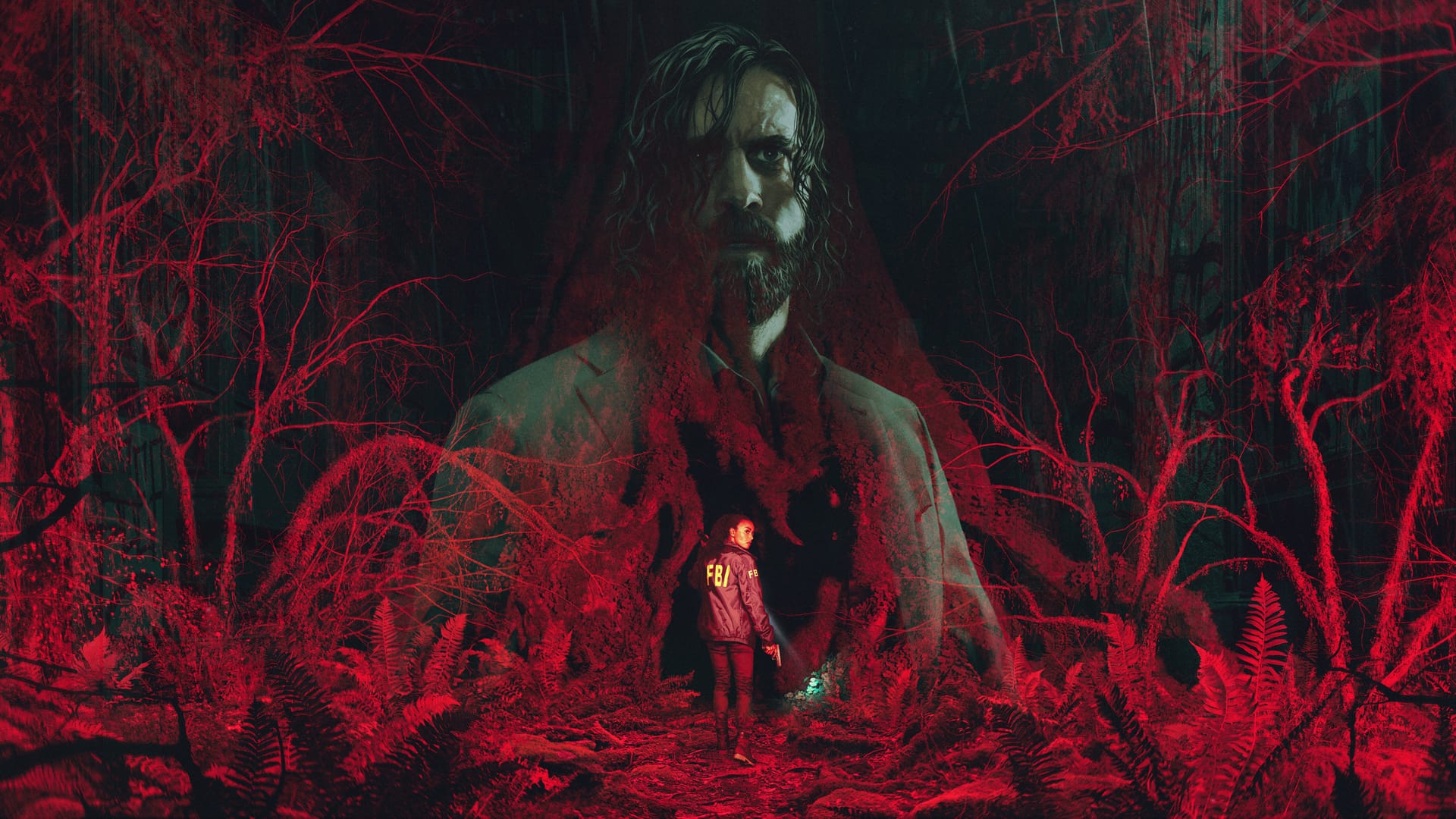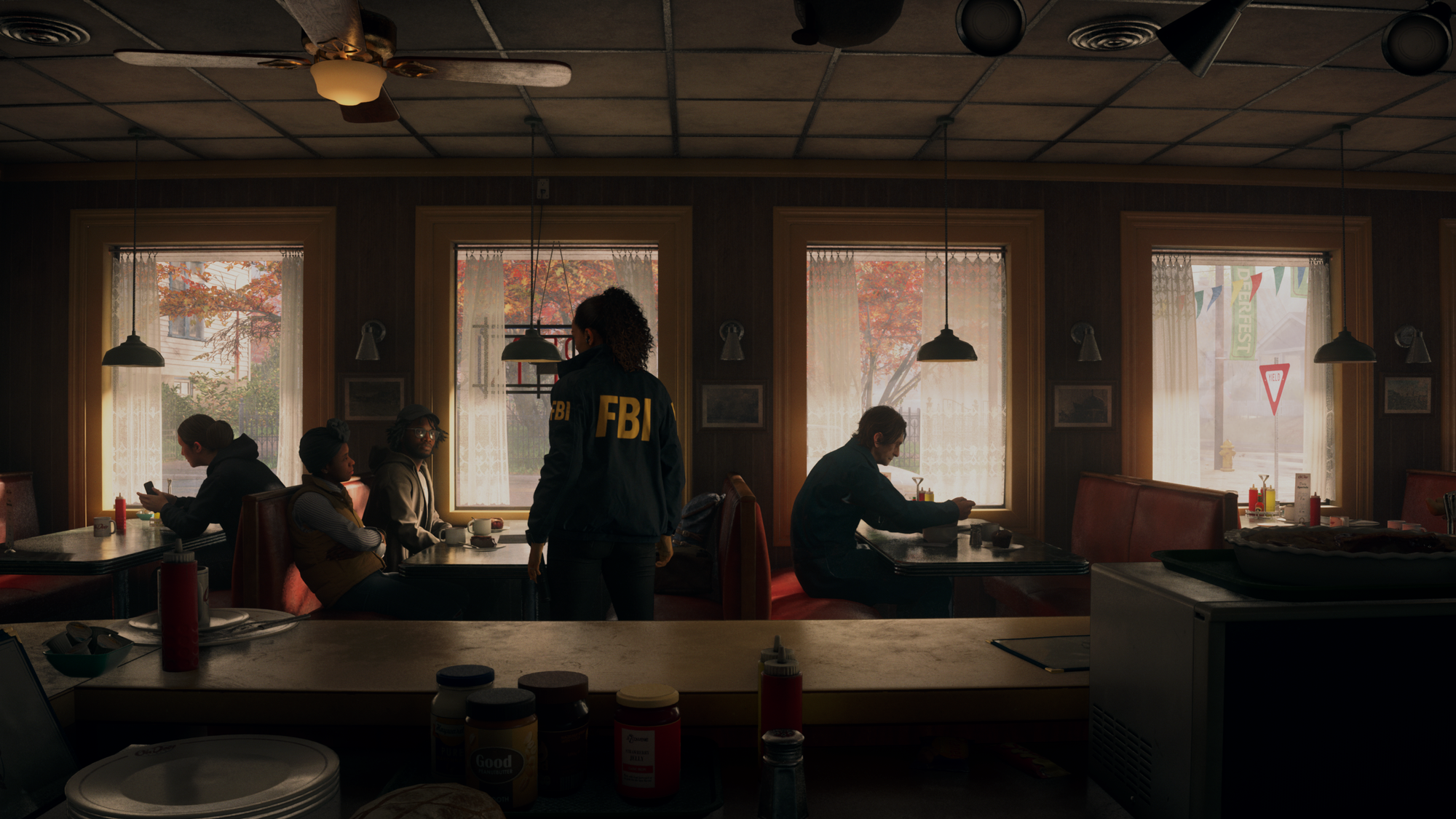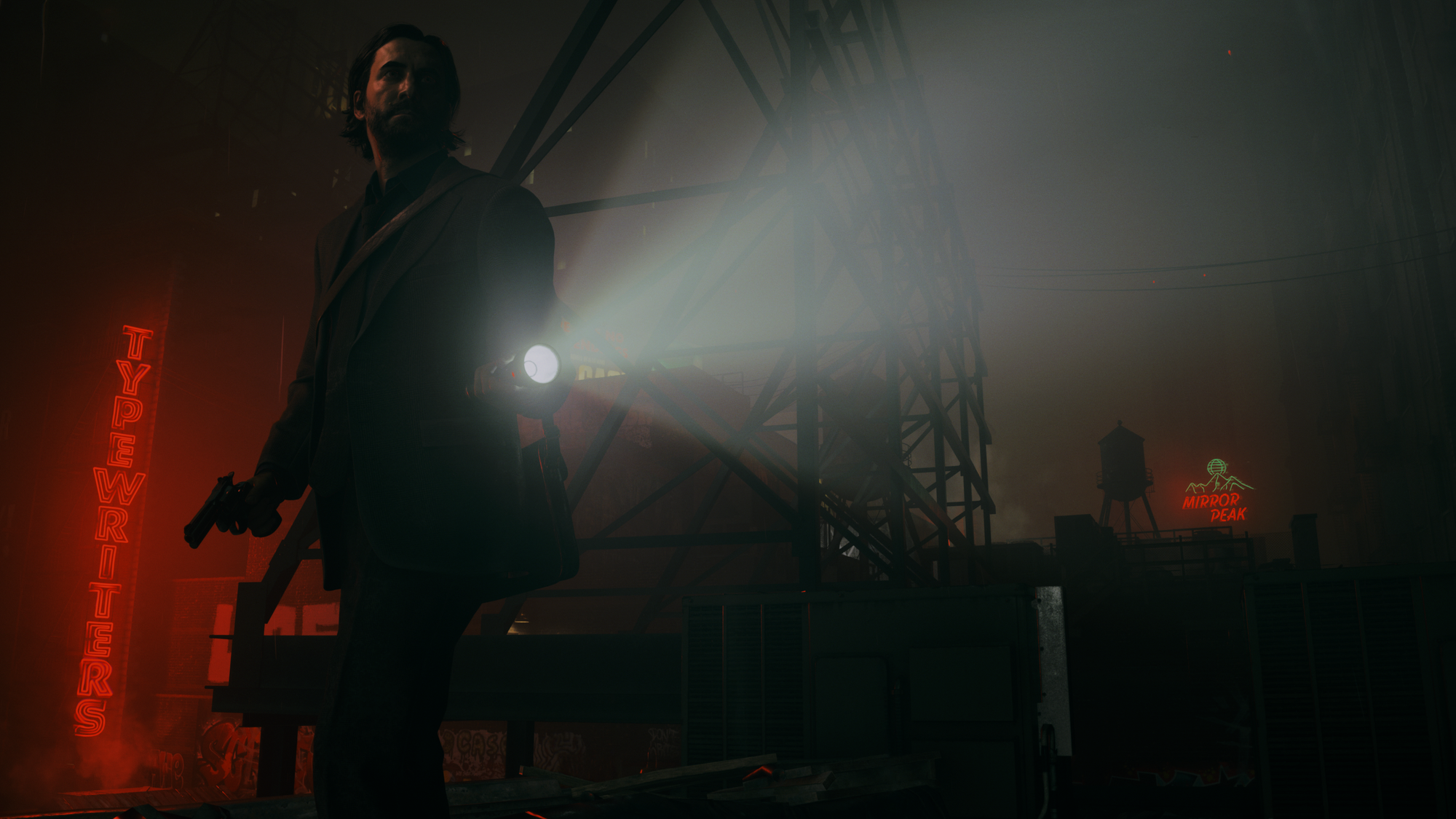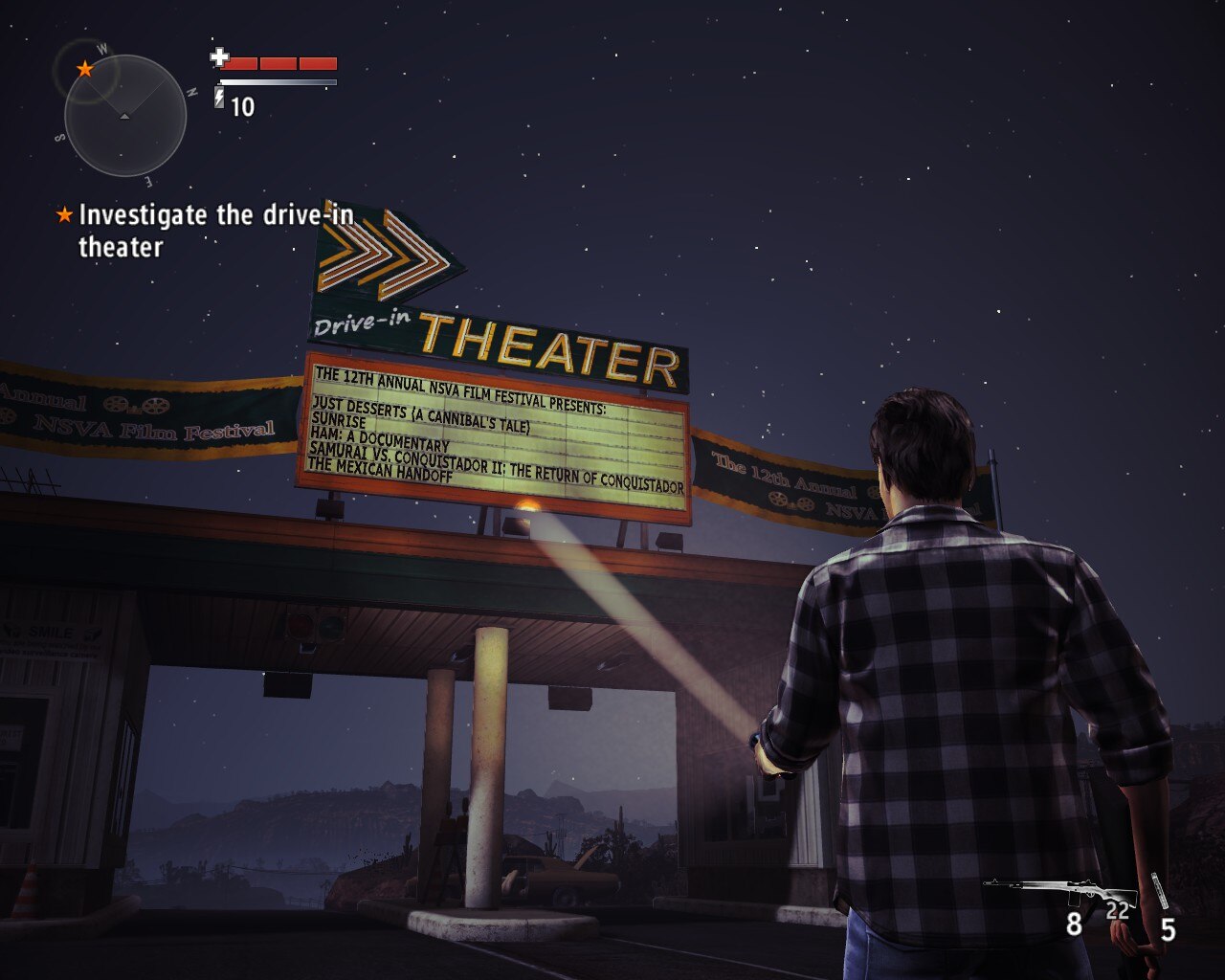Alan Wake and the Author
Examining the journey and the darkness

The Alan Wake series is an audio-visual tour de force of unmatched brilliance that is both parts formally inventive and creatively focused. An often-juvenile audience has sadly contributed to the video game medium being treated like a black sheep, separate from other artistic forms. This piercing beacon of near revolutionary fiction obliterates such an attitude, interweaving a tapestry of prose, poetry, film, music, reference, intertextuality, and plays in a trans-media kaleidoscope that stands as a monument to the act of creation itself. Like a wave crashing against the other side of a mirror, it asks us to evaluate our relationship to art, all while being thrilling, hilarious, scary, and fun. It holds the distinction of being one of the greatest pieces of interactive entertainment ever produced.
These games represent some of the most exceptional narratives, highlighting notable achievements within a larger framework of how art affects us as individuals, an author's responsibility to their subject, the importance of realizing their creative vision, the role of irony, and the significance of a location and our relationship to it.
It’s in the small details too. It’s in the detail of the triangles that kept me awake at night. The triangles in Saga’s world that overlap vertically, the symbol for The Cult of the Tree; the triangles in Alan’s world overlapping horizontally, representing The Cult of the Word. Two triangles stacked on top of each other resemble a tree, two upside down triangles next to each other resemble a W. Are Alan's and Saga's worlds side by side because they reflect each other? The bony, grey twigs and thick trunks of intertwining foliage punctuate her world, enveloping her investigation into the death of a man who went missing 13 years ago — so her cult must concern trees. The heady pretensions and nuances of genre and literary structure forest Alan's world - suggesting that he must be dealing with a cult concerned with words. Trees and words both have stems and branches, and the connection between Saga and Alan’s worlds are called overlaps (just like the triangles do!) and Tim Breaker keeps referencing Dodecahedron — which, as we all know, is the platonic shape, and..., and...
In my hunched and rocking fetal position, I assure myself that this is of great importance. It must be the central clue to the labyrinth of allusions that is a Remedy game.
![[BF]Alan Wake and the Author](https://www.superjumpmagazine.com/content/images/size/w2000/2024/02/scmnco.jpeg)
Yet, I know none of this could be intentional. Rather, it is an achievement that these games can support such intricate, wildly granular analysis. We don't need to worry about correctly untangling the exact details of their overlapping narrative tendrils. What matters is that it inspired such fascination to lead me down this winding road. What matters is that there are visual sequences that flash by in less than a New York minute, representing more intrigue and imagination than whole other games. What matters is that Alan Wake exists uniquely not just in its tone, but in its goals. To give the player something to chew on, to swash about their mouth like Alex Casey investigating the earthy flavour of his evening cup of coffee.
As someone who considers themselves an over-thinker, what could be better? To have games not just to experience in the moment but to ruminate on.
Like a wave crashing against the other side of a mirror, Alan Wake 2 asks us to evaluate our relationship to art, all while being thrilling, hilarious, scary, and fun.
Excessive intellectualising not only gives you forehead wrinkles, it can also be despair, no less than Alan’s, and it is more than likely I am imposing my own mind-place of fascinations onto the games. Hell, perhaps I should listen to the very first line in the first game, a direct quote from Stephen King: “Nightmares exist outside of logic, and there’s little fun to be had in explanations; they’re antithetical to the poetry of fear”. But the 21st century has already propelled this twenty-two-year-old face into its thirties and Alan Wake, both the character and the series, has a lot to say. So, if you would indulge me, watch as I blindly dive in, praying I don’t land in a shallow lake but a deep ocean.
Very few games like to exist in abstraction. Sure, pick any game from itch.io and you will find weird games, fascinating creations that exist in a border space between interesting and unintelligible. In the AAA space, though? A vanishingly thin number of games put forward an experience that isn’t defined, not just by genre, but by their narrative, their themes, in what might have happened and what could happen as the next chapter begins.
The Alan Wake series can be a thrilling, sometimes pulpy, quasi-horror experience. It can also be a deep work, capable of sustaining multiple different readings, begging to be dissected and put back together like the disparate pages of a liminal manuscript.

In this spirit, I pretentiously take umbrage when people employ the too commonly used phrase “beat” when declaring they have wrapped up a game. To say I “beat” a game sits with me wrong. I understand it is born out of the arcade; after far too many quarters dedicated to ‘Punch-Out’ it might fit for the experience to be treated as adversarial, but for the interactive entertainment that is being produced now it seems too churlish.
Yes, I have finished Alan Wake and Alan Wake II, but what does it mean to “beat” it? Rolling credits? Understanding its nuances? Taking part in enough insane forum discussions to confidently label myself an aficionado of the Remedy Extended Universe?
No.
You can’t “beat” the Alan Wake games, just like you can’t beat Othello or The Mona Lisa. It is anathema to its form. It is something that exists in the cultural consciousness, to be with you in the future, to discuss and tease, to inform your appreciation of other works and to inspire you to create your own.
I, of course, understand that this appreciation is not exclusive to Alan Wake or Remedy games. It is true of all games, from Super Mario Bros. to The Last of Us, but it’s Alan Wake that screams it at you. It dares you to understand it, knowing that you cannot in one play session and that to do so is to miss the point. It knows that it is a feature of its narrative design to require ‘extra-reading’, of further plunging into its depths. You can get lost down a thread that may not have been intended to mean anything at all but runs against a conspiratorial wall, and feel glad you did because no other game motivated you to dedicate such effort to decode it.
Sam Lake, the story and creative director of both Alan Wake games found inspiration in various works during the development of the latter. Notably, he pointed to The House of Leaves, a novel by Mark Z. Danielewski, which has regained attention through the impressive video ‘MyHouse.WAD - Inside Doom’s Most Terrifying Mod.’ Aside from the book being tonally similar to the games, they are both arguably examples of ergodic fiction, defined by Espen J. Aarseth in his seminal 1997 book, Cybertext — Perspectives on Ergodic Literature, as fiction requiring non-trivial effort to traverse, unlike non-ergodic literature which demands only trivial effort like turning the page of a book or hitting play on a film.

In The House of Leaves, pages become strangely formatted; some having seemingly unrelated paragraphs of text sitting in separate floating boxes. Sentences will orientate in odd directions, requiring the reader to physically rotate the book. And Danielewski’s sister, the musical artist Poe, released a brilliant companion album 'Haunted' (2004) that can be listened to in conjunction. This same artist also contributed one of the more standout original chapter songs in Alan Wake II (the song's title can be found emboldened in the fifth paragraph to help illustrate the concept of ergodicity).
You might wonder what rattled about in my mind when first encountering the idea that all video games are ergodic. After all, it certainly requires non-trivial effort to see the end of Sekiro and Super Meat Boy. Although these are extreme examples, any game needs substantial input to progress, not just the simple act of pushing a joystick forward and watching it unfold. Requiring such interaction, navigating digital spaces, understanding geometry and position, and often traversing them with great challenge are primary considerations of games.
The Alan Wake series can be a thrilling, sometimes pulpy, quasi-horror experience.
In a July 2002 piece for the international journal of computer game research, James Newman proposed that games are not singularly ergodic experiences, delineating between what he termed, "on-line" and "off-line" states. An "on-line" state is when the player has control, the "off-line" state when they have none. It is when we have this control that a game becomes ergodic, however, because of sections that require no input, such as short videos (cut-scenes) or brief epistolary text (diary entries), it cannot be considered entirely ergodic.
The context of the early 2000s in which the piece was published might have shaped Newman's distinction. At the time of writing, narrative and gameplay were, more-often-than-not, separate. As he correctly notes, we are not playing as Snake in Metal Gear Solid, or, at least, not the Snake we watch in the ground-breaking, cinematic cutscenes that Kojima pioneered. Instead, we are merely a set of abilities, a kinesthetic object no more representational than the mathematical possibilities our controls allow. The visual portrayal of character is only tangential — we are Snake.
The journey is more important than the destination, though. Or, in this case, if the destination is a cohesive narrative, then it cannot exist without the journey. Are the battles fought, the tunnels crawled through, and the play spaces explored not an inextricable part of a game’s storytelling? Blasting your way through a shooting gallery of virtual, nondescript, enemy puppets may deliver less story than more finely animated cutscenes, but it still contains basic, coherent, and chronological beats. A sequence of actions being represented to me on a screen exists in the wider context of a more elaborate tale. In the same way action scenes can be a break in the characterization and plotting in a film, one would be hard-pressed to argue it is still not a part of the story.
It's a poetic coincidence that Newman wrote his piece in the same month as the release of Remedy's hit game Max Payne. After Max receives far too high a dose of the fictional drug Valkyr, he famously realizes that he is in a video game — not the first, but certainly the most iconic example of early meta-fictional experimentation in gaming.
Remedy also introduced the now lauded ability to watch TV shows in the game. This no longer required a fade to black and load to video. Instead, you are still in full control of Max. You can move, dive, shoot and jump, all the while a cliché show is playing on a murky virtual screen. The “On-Line” and the “Off-Line” collide. Play and passivity existing together in some kind of unholy, post-modern shotgun wedding. Ever since, Remedy games have been characterized by this blend of cut-scenes, gameplay, and live-action footage, culminating in Alan Wake II, featuring the ability to watch an honest-to-God short film in the game’s fictional movie theatre, Poet’s Cinema.

The opening epilogue in Alan Wake II ends with the line, “This story is a monster. And monsters wear many faces.” A line that at first glance seems to be nothing more than a moody tone setter, but in understanding the game as an exploration surrounding the relationships between mediums and the dialogue between authors and their subjects, is illuminating. The game is a threshold between forms, in the same way that games are a fuzzy connection between subject and object, and in the same way that Alan, Remedy, and the player are all the many faces contributing to our individualised version of Alan’s story.
I can make Alan strafe left and throw a gas canister with no enemy in sight. I can have Saga circle around Alex Casey as he delivers a foreboding monologue defusing any sense of tension. I can whiff a shot and die at the hands of a talkative shadow man. It is I, the player, who adds deliberate blemishes, edits, scratches.
Where a book or a film is a concrete and established artistic creation to be observed, a game reaches its hand across the gap and invites the player to shape it. The game dissolves the border between the subject and the object. Designed with permutations and billions of micro-alterations, these manipulatable and synthetic instruments empower the player to be more than just the audience, allowing them to actively participate in their own unique artistic creation. Is Alan the author of his journey? Is Sam Lake and the narrative team at Remedy? Or are we? The Alan Wake series casts us all as co-authors, and in doing so shows – more elegantly than any – that this creative collaboration is where games find their transcendence.
After all, Remedy games try to achieve the same thing that all art does: make the subject feel something, and these feelings can be so familiar to us. Everyone will have watched a movie that made them sad or happy; everyone will have read a book that made them excited, or scared; everyone will have listened to music that inspired them or made them dance with joy.
Games can provide feelings that no other kind of entertainment can, and Remedy knows this. The fear of turning a corner at your own pace. The flow of a musical depending on how long you stop to gawk at the gaudy visual scenery. A unique vulnerability knowing that failure is a consequence of your own deliberate hand movements. It is an essential part of the experience, not separate from it, but in dialogue.
As a player makes their way through a game, they write a distinct permutation. Not looping the same track on repeat, but spiralling off, composing their own version of Alan's adventure through the dark.
